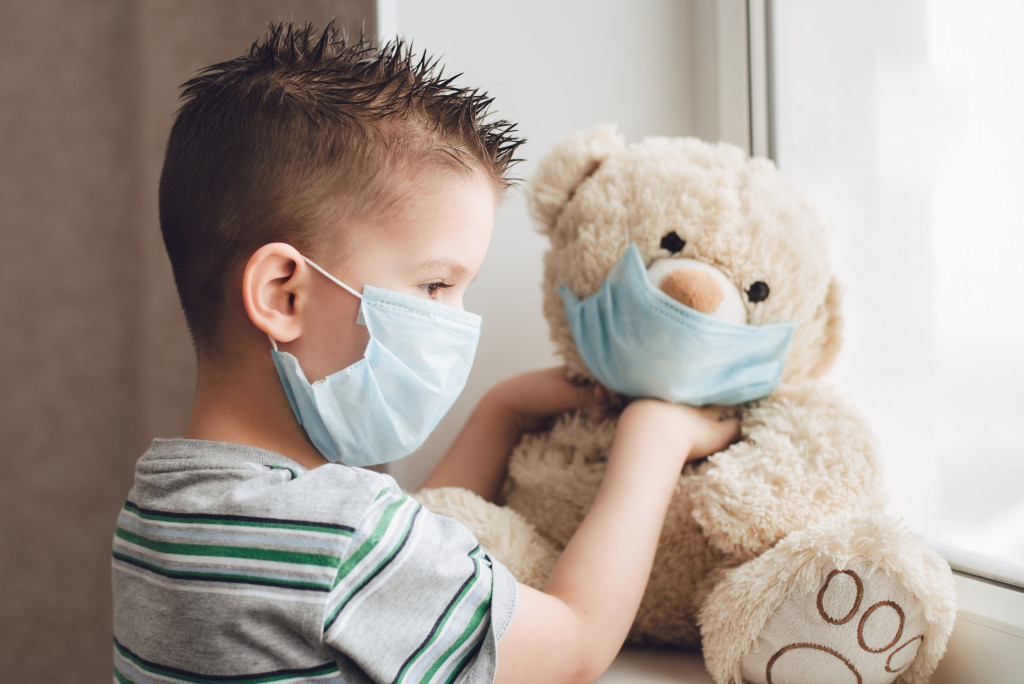- First aid basics and knowing when to seek professional help are essential skills for parents.
- It’s critical to monitor your child’s condition post-injury for any signs of infection.
- Maintaining a well-stocked first-aid kit and preventing further injury are crucial parts of child safety.
- Parents need to be proactive in child-proofing their homes and educating children about safety.
As a parent, you would agree that nothing is more important than the safety and well-being of your child. While you may take all the necessary precautions to ensure your child’s safety, accidents can still happen. As a result, parents need to know how to treat injuries in children. In this blog, you will learn about crucial things parents should know when treating injuries in children.
First aid basics.
The first thing you should learn as a parent is first aid basics. First aid is the initial care given to someone injured or suddenly taken ill. As a parent, it is essential that you know the basic steps to follow in case of an emergency. Knowing how to stop bleeding, treat burns, and handle fractures can help reduce the risk of further harm to your child.
When to call for help.

While most minor injuries can be treated at home with first aid, some injuries may require medical attention. It is important to identify signs that indicate that it is time to seek professional help.
For instance, immediate medical attention should be sought if your child has difficulty breathing or loses consciousness after an injury. Also, if you suspect that your child has a fracture, dislocation, or any other condition that requires professional attention, call for help.
Identify warning signs of infection.
After treating an injury, it is essential to monitor your child’s condition for signs of infection. The signs of infection include fever, redness, and swelling at the injury site, pain, and warmth. If you notice any of these signs, it is essential to seek medical attention immediately.
Contact a children’s urgent care clinic that can provide the necessary assistance. They will be able to properly diagnose and treat your child’s injury to help him/her recover quickly. They will also advise you on how to prevent infection and manage the injury at home. Ignoring the signs of infection may lead to complications that can be detrimental to your child’s health.
Have a well-stocked first-aid kit.
It is essential to have a well-stocked first aid kit in your house. A first aid kit should include basic supplies such as bandages, antiseptics, pain relievers, and scissors. You can purchase a ready-made first aid kit or customize it according to your child’s needs.
It is essential to periodically check the kit and replace expired items. You should also include a copy of your child’s medical records in the kit. This will help if your child is taken to the hospital due to an injury.
Preventing further injury.
It is essential to prevent your child from further injuring themselves. There are plenty of ways to do this. Here are four effective methods you should consider:
Child-proof your home.
Child-proofing your home is one of the best ways to keep your child safe. Install gates at the top and bottom of stairways, place locks on cabinets that contain potential hazards, and keep sharp objects out of reach.
Educate your child about safety.
Educate your child about basic safety rules, such as never running with scissors or touching a hot stove. Discussing basic safety rules can help prevent accidents and injuries.
Always supervise your child.

Never leave a young child unattended, even in the comfort of your home. It is essential to always keep an eye on them and make sure they are playing safely.
Wear protective gear when engaging in outdoor activities.
When participating in outdoor activities such as cycling, skating, or sports, ensure that your child wears the appropriate protective gear. Wearing protective gear can help reduce the risk of severe injury and trauma.
By taking active steps to prevent your child from suffering an injury, you can ensure their safety and well-being.
As a parent, your primary role is to safeguard the health and well-being of your children. Understanding basic first aid, knowing when to seek professional help, identifying signs of infection, maintaining a first-aid kit, and taking active steps to prevent injury are all critical components in protecting your children from harm.
It’s a daunting task, but staying prepared and vigilant can significantly reduce risks and ensure your children grow up in a safe and nurturing environment. Remember, knowledge is power, and when it comes to your children’s safety, there’s no such thing as being overly prepared. Stay safe and vigilant!
